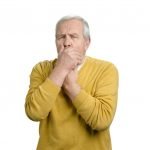THOMAS A. KRUZEL, ND
Urinary incontinence affects 23-31% of the female elderly population1 and is estimated to affect 50-65% of both sexes in hospitals and nursing homes.2 Generally, older women experience more incontinence than men; however, incidence ranges can vary due to a reluctance to report symptoms.3,4 Urinary incontinence can lead to decreased social integration, activity, anxiety, depression, and avoidance of prescribed medications due to side effects.5,6 US health care costs for treatment of urinary incontinence are estimated to exceed $5 billion annually,7 though most relevant to practitioners is the fact that the US Census Bureau projects by 2030, more than 1 in 5 women will be age 65 or older.8 As more women may need evaluation and treatment for urinary incontinence, I have provided an important review of the physiology, classifications, and some clinical pearls based on my clinical experience. Though more common in older populations, urinary incontinence is not a normal consequence of aging, is treatable, and can be reversible.7 Developing an appropriate working knowledge of the factors related to diagnosis and treatment of this condition will help you treat the women coming into your practice.
The Physiology of Urination
According to major textbooks on the subject, including Smith’s General Urology, the bladder is principally under the control of the autonomic nervous system, and bladder detrusor muscle contraction is primarily responsible for voiding.9 Both sympathetic fibers from the hypogastric plexus and parasympathetic fibers from S2-S4 work in concert with one another to initiate and inhibit flow. The urethra is under the influence of the autonomic (internal sphincter) and central (external sphincter) nervous systems. The pudendal nerve influences the pelvic floor musculature contractions, which occur with voiding. Continence occurs as long as intraurethral pressure is higher than intravesical pressure. Incontinence occurs when there is a decrease in intraurethral pressure, an increase in intravesical pressure, or both. Intravesical pressure is influenced by detrusor tone, bladder volume, and intra-abdominal pressure.9
The 6 Types of Urinary Incontinence
Urinary incontinence can present as acute or chronic, and both are potentially reversible depending on the underlying cause.7 The following classifications differentiate each type:
- Urge – Most common in the elderly, urge incontinence is characterized by a strong desire to urinate even when the bladder is not full, resulting in involuntary leakage.10 Usually due to detrusor hyperactivity, symptoms of urgency, frequency, nocturia, and small-volume voiding can occur.10 Patients may experience little warning, and may have a history of childhood enuresis.9 Urge incontinence often accompanies irritative lesions from infection, radiation, chemotherapy, bladder stones, or tumors.9 Additionally, conditions such as stroke, cerebrovascular disease, dementia, multiple sclerosis, Parkinson’s disease, spinal cord injury, and cervical spondylosis can cause urge incontinence.9,10 In postmenopausal women, age-related changes in the lining of the bladder and muscle tissue may further predispose patients to detrusor instability.11
- Stress – Characterized by urination following a sudden increase in intra-abdominal pressure, stress incontinence involves dysfunction of the internal sphincter and/or urethral hypermobility.12 Patients typically experience symptoms of incontinence during a cough, sneeze, laugh, or exercise.9 Because stress incontinence can be partially controlled, eg, avoiding triggers, patients may defer discussing symptoms until their frequency increases. Age-related changes in pelvic floor musculature or trauma due to previous childbirth can further predispose elderly women to this condition.10
- Mixed – A combination of urge and stress incontinence, mixed incontinence is the most common type reported for women overall.13 Evaluation and treatment for mixed incontinence should focus on the dominant symptoms. Treatments for both conditions often overlap.
- Overflow – More common in elderly men due to prostate enlargement, overflow incontinence also affects women and is marked by the patient’s inability to fully void urine.14 Whether due to blockage, detrusor hyporeflexia, prolapse, or other underlying causes, not enough bladder pressure can be reached to overcome urethral resistance, resulting in increased residual volume.9 The bladder then becomes distended and urine is lost, often at inconvenient times. Overflow incontinence, which most often occurs at night, can be caused by bladder outlet obstruction, herniated disk, diabetic neuropathy, tabes dorsalis, alcohol abuse, and medications such as muscle relaxants.9 This condition increases the patient’s chance of developing a urinary tract infection.15
- Functional – Caused by other illness, disability, medications, or conditions resulting in reduced bladder storage capacity, functional incontinence is defined by involuntary urine loss without urinary tract dysfunction.16 Fecal impaction, immobility, dementia, and psychological issues such as hostility toward caretakers can all result in functional incontinence.16
- Reflex – Marked by a lack of sensation of needing to urinate, reflex incontinence occurs with more serious neurological impairment, resulting in detrusor hyperreflexia or involuntary relaxation of the urethra.17 Because patients are unaware, high volume voiding is often experienced. Reflex incontinence can be caused by injury to the brain or spinal cord, complications from surgery or radiation, or conditions like multiple sclerosis or Parkinson’s disease.18
Know What to Look For
Evaluation of urinary incontinence in elderly women should include a thorough history. Ask specifically about previous urinary tract infections, pelvic surgery, trauma, childbirth, diabetes, alcohol use, and current prescriptions. Voiding diaries can help reluctant patients more easily discuss their symptoms, and provide useful clinical information. Physical examination should emphasize abdomen, pelvic, rectal, and neurological function. Post-voiding residual urine can be measured, with normal being 50-100 cc.19 In older individuals, a residual volume of 75-100 cc is acceptable.19 The cough test can be performed while doing a gynecological exam, and helps make the diagnosis of stress incontinence. Laboratory studies should include a complete urinalysis, vaginal and cervical cytology, estrogen status, glucose, electrolytes, blood urea nitrogen, and creatinine.
Treatment Perspective
Once a diagnosis has been made, treatment for urinary incontinence will vary based on the type and underlying cause. Pharmacological treatments include anticholinergic agents, alpha-adrenergic agonists, alpha-adrenergic antagonists, estrogen replacement therapy, and botulinum-A toxin injection.20 There are also a number of naturopathic treatments I have found effective, which and can be tailored to the individual patient’s needs and symptom pattern. Here are a few of the clinical pearls I have gathered in treating this condition:
- Reviewing the type and volume of fluid intake is vital. Often making changes in this area will eliminate or cut down the number of incontinence episodes, especially if diuretics or diuretic fluids are involved.
- When appropriate, Kegel exercises should be initiated to strengthen pelvic musculature. The caveat here is that most patients, and even some clinicians, do not know how to perform these exercises correctly, even after review. Referral to a physical therapist for biofeedback can be helpful. By measuring pelvic floor pressure during the exercises, patients learn how to do them properly, maximizing their chances for success.
- Interferential therapy can be used for increasing blood flow, nerve conduction, and can be combined with Kegel exercises. The 4 pads are placed around the urethra and a rotating cross current is run for 10 minutes, 2-3 times per week.
- Consider referral for acupuncture and/or auricular therapy. While I do not practice these modalities, they can be particularly helpful when used in conjunction with other therapies.
- Herbal medicines are often useful. The choice of botanicals should be based upon presenting symptoms as well as any laboratory data available. Consider formulas that can address hormone irregularities if they are indicated.
- Many homeopathic remedies are indicated for treatment of urinary incontinence. Try beginning with the constitutional remedy if it is known; otherwise, first complete a full homeopathic intake. I find constitutional remedies are often effective, though lesional remedies can also be considered should the constitutional remedy fail.
Key Takeaways
As naturopathic physicians, prevention is our best medicine. What is of importance in the treatment of urinary incontinence is recognition of susceptible individuals, implementation of preventive measures, and patient education long before the condition worsens. Elderly patients often think of incontinence as a normal part of aging, can be reluctant to discuss symptoms, and can suffer without treatment until their incontinence becomes unmanageable. Knowing what to look for, how to talk to your patients about incontinence, and telling them specifically that it can be treated will help. Elderly women are most susceptible to developing urge, stress, or mixed incontinence. Continuing to develop your understanding of diagnosis and treatment for these conditions will help you treat the women currently in your practice, and better serve those turning 65 over the next decade.
References
- Nygaard I, Barber MD, Burgio KL, et al. Prevalence of symptomatic pelvic floor disorders in US women. JAMA. 2008;300(11):1311-1316.
- Leung FW, Schnelle JF. Urinary and fecal incontinence in nursing home residents. Gastroenterol Clin North Am. 2008;37(3):697-707,x.
- Aoki Y, Brown HW, Brubaker L, et al. Urinary incontinence in women. Nat Rev Dis Primers. 2017;3:17042.
- Wallner LP, Porten S, Meenan RT, et al. Prevalence and severity of undiagnosed urinary incontinence in women. Am J Med. 2009;122(11):1037-1042.
- Farage MA, Miller KW, Berardesca E, et al. Psychosocial and societal burden of incontinence in the aged population: a review. Arch Gynecol Obstet. 2008;277:285-290.
- Benner JS, Nichol MB, Rovner ES, et al. Patient-reported reasons for discontinuing overactive bladder medication. BJU Int. 2010;105(9):1276-1282.
- McDaniel C, Ratnani I, Fatima S, et al. Urinary incontinence in older adults takes collaborative nursing efforts to improve. Cureus. 2020;12(7):e9161.
- US Census Bureau. Demographic turning points for the United States: population projections for 2020 to 2060. Available at: https://www.census.gov/library/publications/2020/demo/p25-1144.html. Accessed July 25, 2021.
- Tanagho EA, McAninch JW, eds. Smith’s General Urology. 17th ed. New York, NY: McGraw-Hill; 2008.
- Vogel SL. Urinary incontinence in the elderly. Ochsner J. 2001;3(4):214-218.
- Potts JM, Payne CK. Urinary Urgency in the Elderly. Gerontology. 2018;64(6):541-550.
- McGuire EJ. Pathophysiology of stress urinary incontinence. Rev Urol. 2004;6(Suppl 5):S11-S17.
- Melville JL, Katon W, Delaney K, Newton K. Urinary incontinence in US women: a population-based study. Arch Intern Med. 2005;165(5):537-542.
- Demaagd GA, Davenport TC. Management of urinary incontinence. P T. 2012;37(6):345-361.
- Storme O, Tirán Saucedo J, Garcia-Mora A, et al. Risk factors and predisposing conditions for urinary tract infection. Ther Adv Urol. 2019;11:1756287218814382.
- Elkadry E. Functional urinary incontinence in women. J Pelvic Med Surg. 2006;12(1):1-13.
- Poonia MK, Kaur G, Chintamaneni M, Changela I. New insights into molecular targets for urinary incontinence. Indian J Pharmacol. 2010;42(5):261-266.
- Fowler CJ. Neurological disorders of micturition and their treatment. Brain. 1999;122(7):1213-1231.
- Shimoni Z, Fruger E, Froom P. Measurement of post-void residual bladder volumes in hospitalized older adults. Am J Med. 2015;128(1):77-81.
- Zagaria MA. Persistent urinary incontinence in older women: Treatment can improve quality of life. US Pharm. 2006;31(9):20-34. Available at: https://www.uspharmacist.com/article/persistent-urinary-incontinence-in-older-women. Accessed July 25, 2021.

Thomas A. Kruzel, ND graduated from NCNM and is in private practice at the Rockwood Natural Medicine Clinic in Scottsdale, AZ. He completed 2 years of family practice medicine residency at the Portland Naturopathic Clinic; he also completed a fellowship in geriatric medicine through the OR Geriatric Education Center and the Portland VA hospital. Dr Kruzel has authored several books, as well as published numerous articles. Dr Kruzel is a past-president of the AANP. He was selected as Physician of the Year by the AANP in 2000, and Physician of the Year by the AZ Naturopathic Medical Association in 2003.





